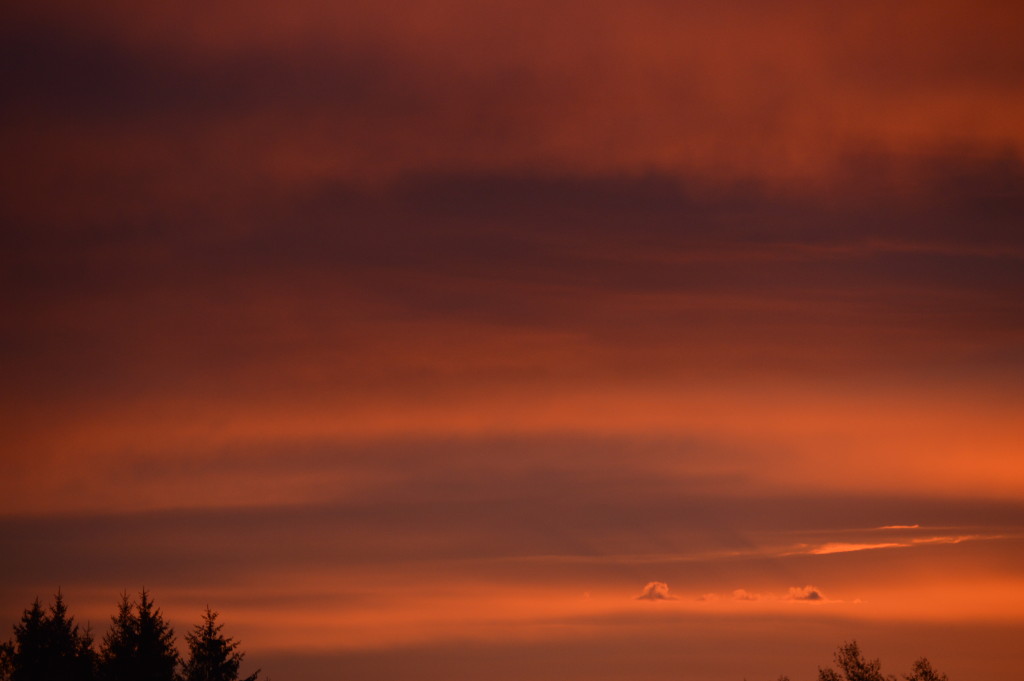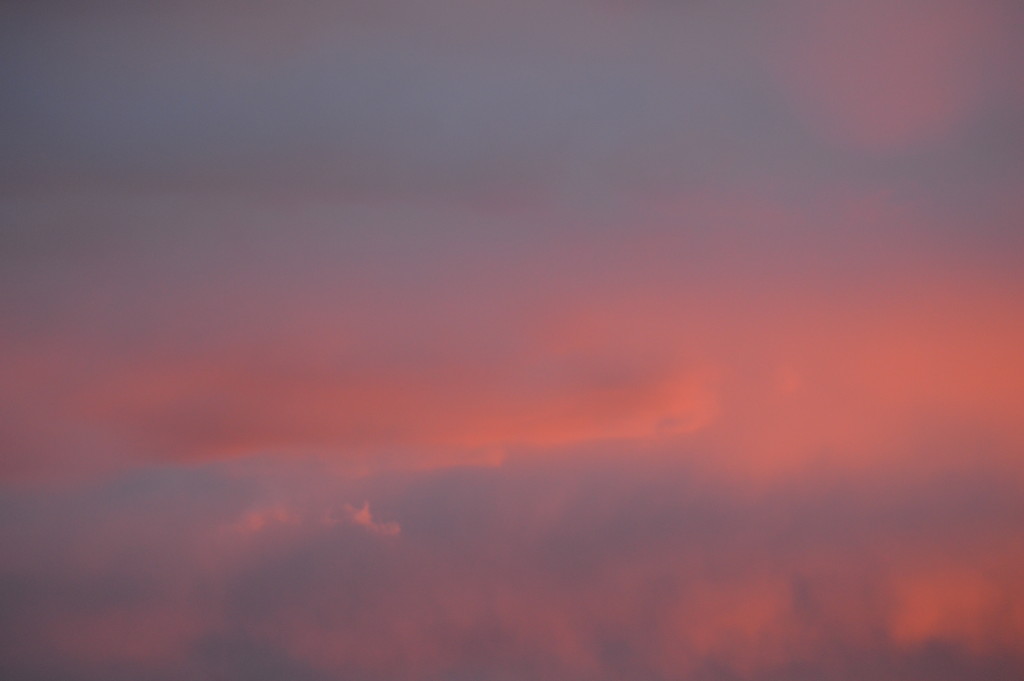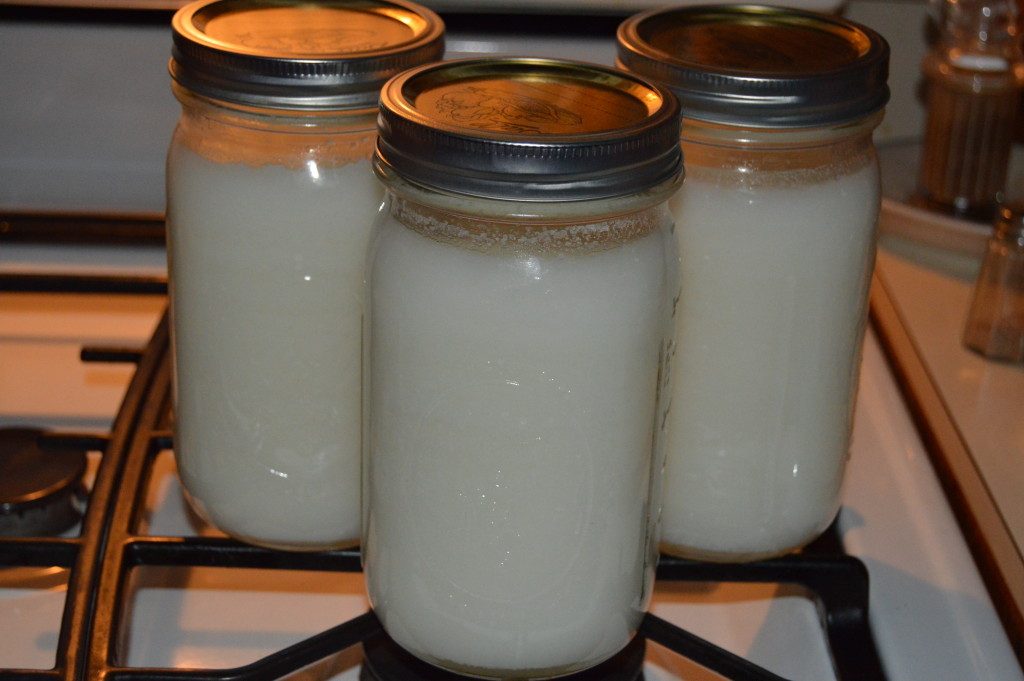
Ok, before I get started I just wanted to show you a couple pictures of the sunrises her in Maine the past few days. I have been very blessed to see them.
Fall has arrived here in Maine which for the homestead means that the pigs that we have been raising for the past several months will soon be converted into pork chops etc. Since this will take up a good amount of space in our freezers it is time to get them cleaned and organized so everything will fit.
Part of this is to get all the fatback that been waiting to be turned into lard processed. Yes, there are two years worth that I need to take care of. Every year I say that I'm going to do it as soon as we are using the woodstove so that I can just put it in the pan on top of the stove and let it do it's thing. You know how that goes though. So this year I'm trying a new method and it seems to be working great.

I take the fatback out of the freezer and partially thaw it. It is so much easier to work with if it is still partially frozen.
Slice the partially frozen fatback with a very sharp knife
I then grind the fatback with my wonderful grinder we purchased after I wore out two grinding attachments for my KitchenAid mixer. I use a very large hole grinding plate so that you have pieces and not just mush. This grinder has come in handy for so many things including making ground turkey after we butcher the turkeys in November.
Using my turkey roaster the ground fatback is put in a 250 degree oven to melt slowly. I stir it occasionally and it really doesn't take that long until you can jar the first rendering. I use quart wide mouth mason jars for this.
This is the set up I use when I fill the jars. I have my funnel with a fine mesh strainer on top. I ladle the fat out of the roasting pan through the strainer and then what ends up in the jar is really clean and smooth. I tipped the roasting pan so that the melted fat would flow to the corner for easier ladling. Just push the unmelted fat out of the way. You need to have the canning jar lids in hot water and ready before you start to jar your lard. As soon as you have your jar full leaving a 1 inch head space clean the rim really, really well. Any little amount of fat will prevent the jar from sealing. Put on your lid and secure with a ring. Set the jars aside in a draft free location on a towel and let them be.
After you have gotten all the liquid off of the fat return the roaster to the 250 degree oven and let it render for awhile longer. You will be able to get a second amount of fat to jar but this will not be the pure white of the first jars. It will have a more yellow color and it will have a little bit of a "pork" taste to it. The pure white batch is great for baking biscuits and pie crusts and all those things you want to be flakey but don't want any imparted flavors. The second rendering is good for using with anything savory. I use mine just like I would use bacon fat. Cooking eggs, veggies etc.
After the jars have cooled completely check to make sure they have sealed. The 250 degree hot lard should be enough as it cools to make the jars seal. If you find any that have not sealed you can reheat the lard and try again or just put the jars in the freezer. Those that have sealed are shelf stable.
I have also made my own salt pork in the past maybe I'll try it again with the fat from this years pigs.






